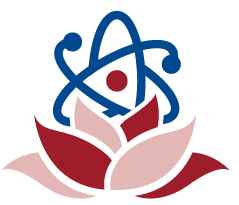| Golgi apparatus སྒོལ་གཟུགས། | biol. An organelle in eukaryotic cells that stores and modifies proteins for specific functions and prepares them for transport to other parts of the cell. | ཉིང་ལྡན་ཕྲ་ཕུང་ནང་དུ་སྤྲི་རྫས་གསོག་ཉར་དང་བྱེད་ལས་དམིགས་བསལ་བའི་ཆེད་དུ་སྤྲི་རྫས་ལ་འགྱུར་བ་གཏོང་བ། ཕྲ་ཕུང་གི་ས་ཁུལ་གཞན་ལ་སྤྲི་རྫས་དབོར་འདྲེན་བྱེད་པར་གྲ་སྒྲིག་བཅས་བྱེད་མཁན་གྱི་དབང་ཕྲ་ཞིག |
| golf player སྒོལ་རྩེད་པ། | sport. | |
| golf club སྒོལ་རྒྱུག | sport. | |
| golf སྒོལ་རྩེད། | sport. | |
| goiter ལྦ་བ། སྦ་བ། | biol. An endocrine gland in vertebrates, located in the neck region, which produces thyroid hormones including thyroxine. | སྒལ་རུས་ཅན་གྱི་སྲོག་ཆགས་ཀྱི་མཇིང་པའི་ཁུལ་དུ་ཡོད་པའི་ནང་རྨེན་རྨེན་བུ་ཞིག་ལ་གོ་ཞིང་། ཐཡི་རོ་ཛིན་ལ་སོགས་པའི་ཨོལ་མདུད་རྨེན་རྫས་ཐོན་སྐྱེད། |
| Goblet cell ཕོར་དབྱིབས་ཕྲ་ཕུང་། | biol. | |
| Goal-oriented planning དམིགས་གཙོའི་འཆར་འགོད། | neurosci. | [དམིགས་ཡུལ་གཙོ་བཟུང་གི་འཆར་འགོད།] |
| goal-directed behavior དམིགས་གཏད་སྤྱོད་ལམ། (དམིགས་ཡུལ་ལ་གཏད་པའི་སྤྱོད་ལམ།) | neurosci. | |
| go-signal སོང་བརྡ། | | |
| glymphatic system འབྱར་ཆུ་མ་ལག། (འབྱར་སྐྱི་དང་ཆུ་སེར་གྱི་མ་ལག) | neurosci. | |
| glycosidic མངར་བཅས་ཀྱི། | biol. | |
| glycoprotein མངར་བཅས་སྤྲི་རྫས། | biol. A molecule consisting of a protein unit complexed with a carbohydrate. Glycoproteins form important structural and functional components of plasma membranes. | སྤྲི་རྫས་ཤིག་ཁར་སྦོ་མངར་རྫས་དང་སྡེབ་ནས་གྲུབ་པའི་འདུས་རྡུལ་ཞིག་ལ་གོ་ཞིང་། མངར་བཅས་སྤྲི་རྫས་ནི་ཆུ་སེར་སྐྱི་མོའི་བཀོད་པ་དང་བྱེད་ལས་གཉིས་ཀྱི་གྲུབ་ཆ་གལ་ཆེན་ཞིག་ཡིན། |
| glycolysis མངར་རྫས་ཞིག་འགྱུར། | biol. The process in cell metabolism by which glucose is broken down in a series of steps, producing ATP and pyruvic acid. | བསྟར་ཆགས་ཀྱི་རྒྱུད་རིམ་ཞིག་ལ་བརྟེན་ནས་སྒུལ་མངར་དེ་ཞིབ་ཞིབ་བཏང་སྟེ་ཨེ་ཊི་པི་དང་པེ་རུ་ཝིག་སྐྱུར་རྫས་སྐྲུན་པར་བྱེད་པའི་ཕྲ་ཕུང་ནུས་འགྱུར་གྱི་བྱེད་རིམ་ཞིག |
| glycolipid མངར་བཅས་ལི་ཚིལ། | biol. A lipid that contains one or more carbohydrate groups. | ཁར་སྦོ་མངར་རྫས་ཀྱི་སྡེ་གཅིག་གམ་ཁ་ཤས་དང་ལྡན་པའི་ལི་ཚིལ་ཞིག་ལ་ཟེར། |
| glycogen མངར་སྐྱེད། | chem. A carbohydrate stored in the liver and muscles of animals that is converted to glucose for energy when glucose levels in the blood are low or when the muscles need fuel. | སྲོག་ཆགས་ཀྱི་མཆིན་པ་དང་ཤ་སྒྲིམ་གྱི་ནང་དུ་གསོག་འཇོག་བྱས་ནས་ཡོད་པའི་ཁར་སྦོ་མངར་རྫས་ཤིག་ལ་ཟེར། ཁྲག་གི་ནང་དུ་སྒུལ་མངར་གྱི་ཚད་རིམ་དམའ་པོ་ཡོད་པའི་སྐབས་སམ། ཤ་གནད་སྒྲིམ་པ་ལ་བུད་རྫས་དགོས་བའི་སྐབས་སུ་སྒུལ་མངར་ལ་བརྗེ་སྒྱུར་བྱས་ཏེ་ནུས་པ་མཁོ་སྤྲོད་བྱེད། |
